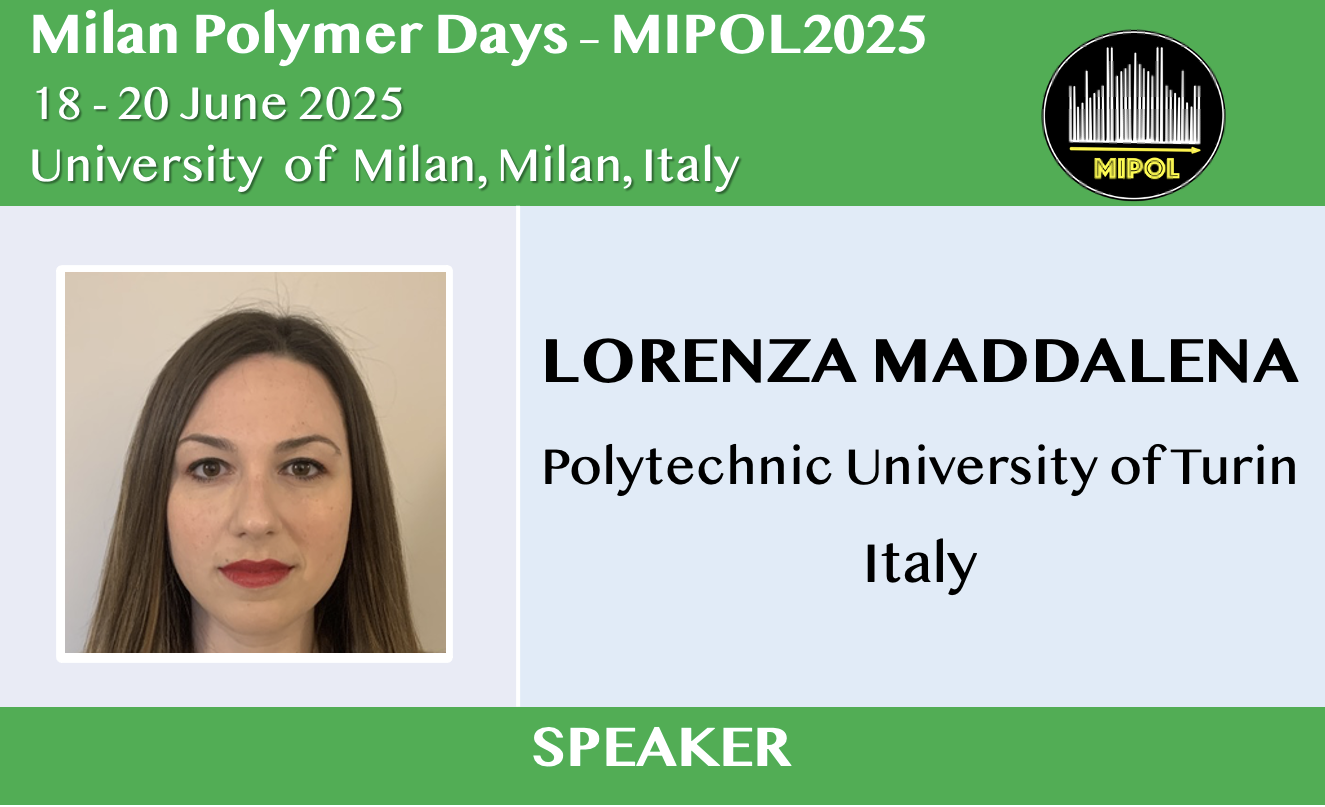Polyelectrolytes complexation as structural tool for the preparation of self-standing and flame retardant bio sourced composites
Abstract

Polyelectrolyte’s complexation is a versatile tool that can be used for the preparation of functional composites or coatings due to the wide range of possible polyelectrolyte combinations and assembly parameters. Indeed, it is well known that it is possible to modulate the complexation mechanism by finely tuning the pH, the ionic force, the temperature and other parameters. This opened to many application fields such as: flocculation, separation membranes, hydrogels, just to mention a few. Here, polyelectrolytes complexes (PECs) are employed as an efficient tool for the preparation of self-standing natural polymer-based composites with 3D structure and flame retardant characteristics. Chitosan and sodium polyphosphate PECs were deposited in a layer by layer (LbL) fashion on cellulose fibres in order to produce lightweight fiber-networks by a freeze-drying approach [1]. It was demonstrated by SEM micrographs that LbL-treated fibres were assembled thanks to the coating that acted as a glue enabling the production of a 3D porous structure with a content of cellulose fibers ranging from 80 to 90% wt. The deposition of a single chitosan/ polyphosphate pair (1BL) was sufficient to obtain self-extinguishment behaviour after direct flame application in horizontal configuration. At 3BL the flame spread was prevented also in vertical configuration. By cone calorimetry, the prepared foams showed limited smoke production with a total smoke release one order of magnitude lower than commercial polyurethane foams as well as extremely limited heat release rates. A similar approach has been then applied, in a circular economy perspective, to grape pomace and rice husk particles collected as waste from wine industry and rice production. In details, LbL-treated rice husk particles were combined with cellulose nanofibrils for the production of lightweight composites (density 40-80 kg/m3) characterized by high (80%wt) rice husk content. The samples showed a compression strength ranging from 20 to 120 kPa at 10% compression strain depending on the density. A self-extinguishing behaviour was achieved in both horizontal and vertical configuration flammability tests. Similarly, aiming at a completely renewable composition, grape pomace particles were mixed with cellulose nanocrystals/gelatin PECs in order to produce light weight composites having a density of 80 kg/m3. The freeze-drying procedure yielded porous composites that can be easily handled and display good structural integrity. These results clearly show the potentialities of polyelectrolytes complexation as viable tool enabling the production of sustainable lightweight materials capable of competing with petroleum-based foams.
References
- M. Marcioni, M. Zhao, L. Maddalena, T. Pettersson, R. Avolio, R. Castaldo, L. Wågberg, F. Carosio ACS Appl. Mater. Interfaces 2023, 15, 36811D.
Acknowledgments
The authors acknowledges financial support under the National Recovery and Resilience Plan (NRRP), Mission 4, Component 2, Investment 1.1, Call for tender No. 1409 published on 14.9.2022 by the Italian Ministry of University and Research (MUR), funded by the European Union – NextGenerationEU– Project Title Green cellulose bAsed fire safe and lightweight Insulating mAterials (GAIA) – CUP project (CUP: E53D23017860001- Grant Assignment Decree No. 1389 adopted on 01/09/2023 by the Italian Ministry of Ministry of University and Research (MUR). This work was financed by the European Union - NextGenerationEU (National Sustainable Mobility Center CN00000023, Italian Ministry of University and Research Decree n. 1033 - 17/06/2022, Spoke 11 - Innovative Materials & Lightweighting). The opinions expressed are those of the authors only and should not be considered as representative of the European Union or the European Commission’s official position. Neither the European Union nor the European Commission can be held responsible for them.

